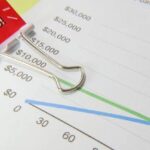We all have a preferred route to get to our destination. Talking of which, to enhance the enjoyment of your property, you may contemplate installing a pool. Perhaps, you’ve even Googled inground pools Rhode Island – assuming it’s the route you have in mind.
Well, in-ground and above-ground pools are quite popular these days. But inground pools have a special allure to them – they spell luxury, relaxation, and fun. That said, an above-ground pool also offers a few advantages, including being more affordable and easier to install.
Maybe you’re caught in the middle, trying to decide which of the two options is ideal. Or, you may want the best of both worlds while saving some bucks per splash. The solution: install your above-ground pool in the ground. Is it feasible? Yes, but, to pull off such a feat, you must take specific precautions. First, though…
Why Sink an Above-Ground Pool?
Many people choose to sink their above-ground pools for aesthetic reasons. Most above-ground pools have higher walls, giving the illusion that the pool is much larger. Sinking such a pool in the ground decreases the height of the walls, giving it a grounded look and feel. So, what considerations should you make when installing your above-ground pool in the ground? Here are a few:
- The Hole’s Dimensions
You’ll need to dig a hole big enough for the entire pool. The pool’s walls should be at least 2 feet underground, implying the cavity should be at least 4 to 6 feet deep. While at it, make the hole wide enough, so the pool’s walls don’t collapse when backfilling.
Click here – Why You Need a Drainage Plan for Your New Home
Usually, pool installers construct above-ground pools on-site. As such, if the hole has the exact dimensions of the pool, the crew won’t have enough room to work on your pool, especially its outer sides. Hence, leave at least 2 feet around the pool for easy access and assembly of various components.
- The Base
Is the base of the hole large enough? When digging a hole, a contractor often starts off right, with accurate measurements and all. But, as the hole deepens, the diameter tends to decrease, meaning the base may not be wide enough. This is not ideal for an inground pool.
The hole should have a large, flat surface at its bottom for a level foundation. If the base isn’t level or if it’s too small, you may need to excavate further and make adjustments accordingly.
Before you sink your pool in the ground, level the area and create a firm base. The best way to do this is to use gravel. After excavation, fill the bottom with at least 6 inches of gravel. Use a level to ensure the gravel is evenly distributed, and compact it using a tamper. After creating a firm base, you can install your pool. But first, check the manufacturer’s instructions on how to do so.
- Backfilling
After installation, allow the pool to fill with water before backfilling the hole with excavated soil. Most above-ground pools don’t handle outside pressure too well when empty. As such, backfilling yours while it’s empty may cause its structure to collapse.
Also, the excavated soil should have a sandy texture for proper drainage – it should also be devoid of large rocks or roots. Plus, ensure to compact the soil as you backfill to avoid settling in the future.
- Safety and Zoning
You must adhere to strict safety standards and codes when installing your pool. But since an above-ground pool is often not as deep, some of these requirements may not apply. Nevertheless, take safety precautions when sinking your pool into the ground. For instance, invest in a gate to surround the pool and prevent unauthorized access, especially by children.
Also, if you have underground power lines or other utilities near the excavation site, consult with a professional to avoid any accidents. It’s also advisable to check with your local building department to understand the zoning regulations you must follow when installing your pool.
- Waterproofing
When sinking an above-ground pool in the ground, remember to waterproof it to prevent water seepage and rusting of metallic components, especially the walls and frame. Waterproofing is even more critical if your pool is in an area with a high water table. In such a case, you may have to install a submersible pump to remove groundwater that may seep into the hole.
- Warranty
Above-ground pools aren’t intended to be installed below grade. So, if you’re considering doing so, check the warranty before buying or installing the pool. Most manufacturers won’t honor warranties for pools installed in-ground since it voids the terms.
Generally, you can install an above-ground pool on the ground, provided you take the necessary precautions and follow the manufacturer’s instructions to avoid accidents or property damage. Then, you can enjoy the in-ground pool experience without breaking the bank. Now, does that sound like a route you’d like to take? We’ll let you decide.
Click here – Find a Retaining Wall Builder Near Me






